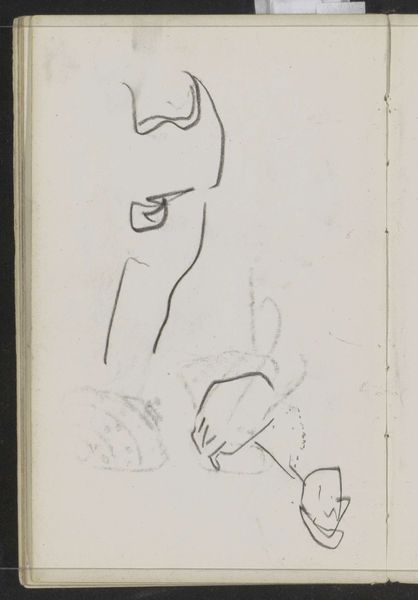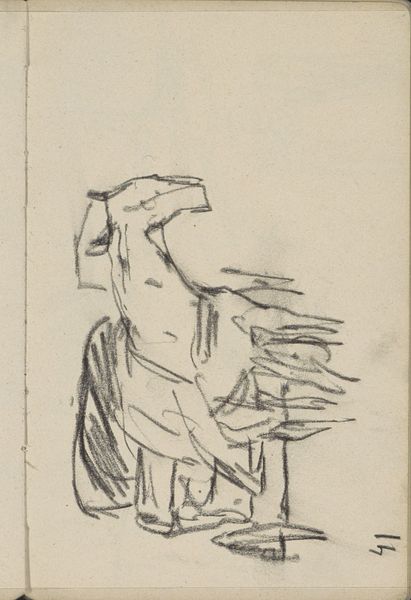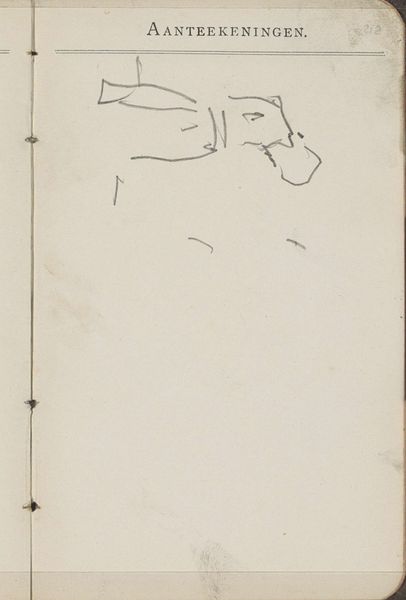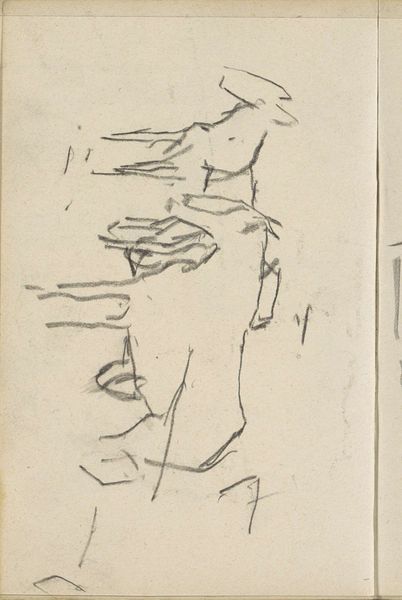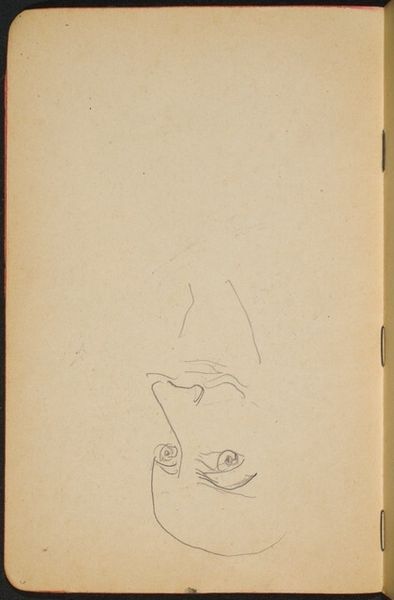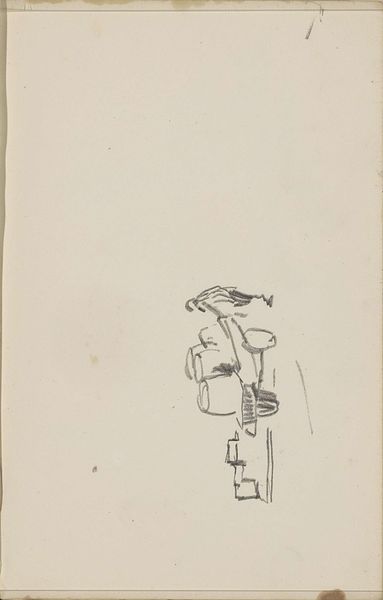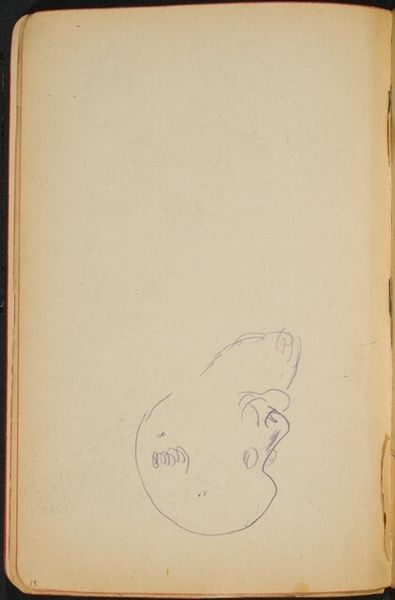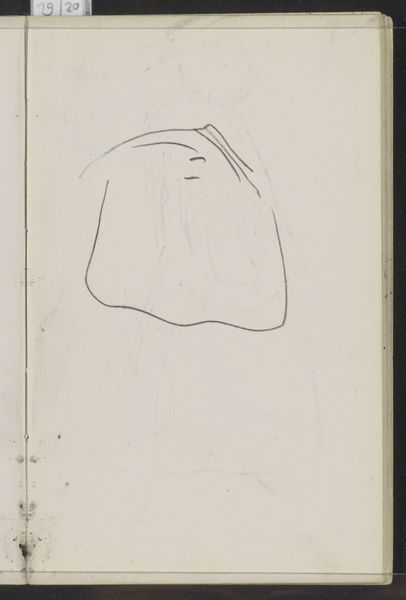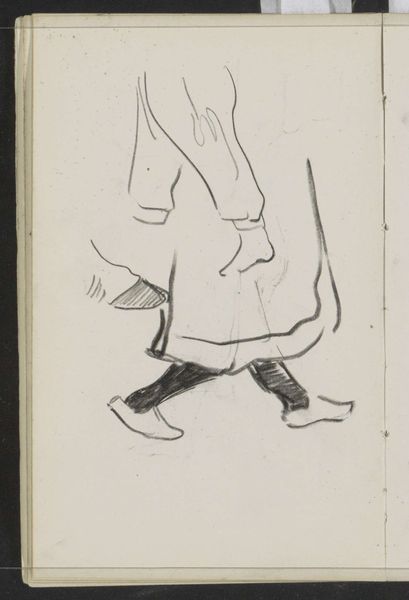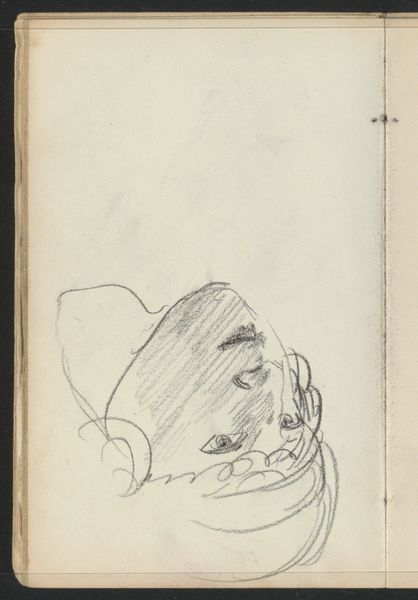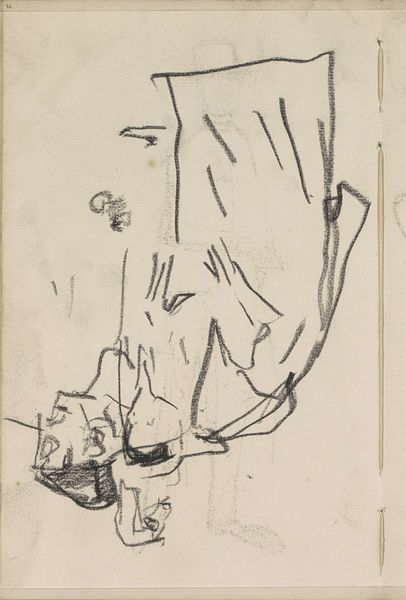
drawing, paper, graphite
#
drawing
#
organic
#
pen sketch
#
figuration
#
paper
#
line
#
graphite
#
modernism
Copyright: Rijks Museum: Open Domain
Curator: There's a quiet intimacy about this drawing. "Studie, mogelijk een figuur," or "Study, possibly a figure," created around 1890 by Carel Adolph Lion Cachet. The stark lines are strikingly modern. Editor: My initial impression is vulnerability. It's so bare, so stripped down to essential form, but still suggestive. The artist offers us a raw glimpse of something...human? Curator: Yes, there's a definite sense of something caught in a transient state. What makes it resonate with me is Cachet's use of line. Notice how economically he uses graphite and ink; just enough to hint at form, shadow, and, possibly, a story. The use of the line, and particularly the hatching style, reminds one of printmaking, and is incredibly contemporary. Editor: It definitely speaks to modernism’s emerging visual language. But why this reduction, this paring away? Do you think it was a stylistic choice or indicative of broader socio-political feelings around the fin de siecle? The sense of loss of certainty in modernity itself is there in its fragile, unfinished presence, don't you think? Curator: Undoubtedly. I suspect it was part of the era’s drive to capture subjective emotional realities rather than simply objective visual facts. The symbolic weight, even in an unfinished state, feels heavier. If it depicts the isolation of the modern self, the study becomes powerful in a new context. Editor: Exactly. Consider this study alongside broader shifts in representation. Courbet's emphasis on working-class bodies, Degas's informal portraiture...there's a thread here that leads towards disrupting bourgeois artistic norms and expectations. This small study, though seemingly simple, sits within this major transition. Curator: That's beautifully said, helping me frame Cachet's efforts within their social context. This drawing truly invites one to contemplate its potential for broader symbolic interpretation. It resonates within both the individual artistic journey and the evolving world around it. Editor: Absolutely, seeing it through a historical lens opens up further understanding. Art is as much about what it rejects as what it depicts! This piece underscores art's historical relationship to broader culture and memory.
Comments
No comments
Be the first to comment and join the conversation on the ultimate creative platform.

